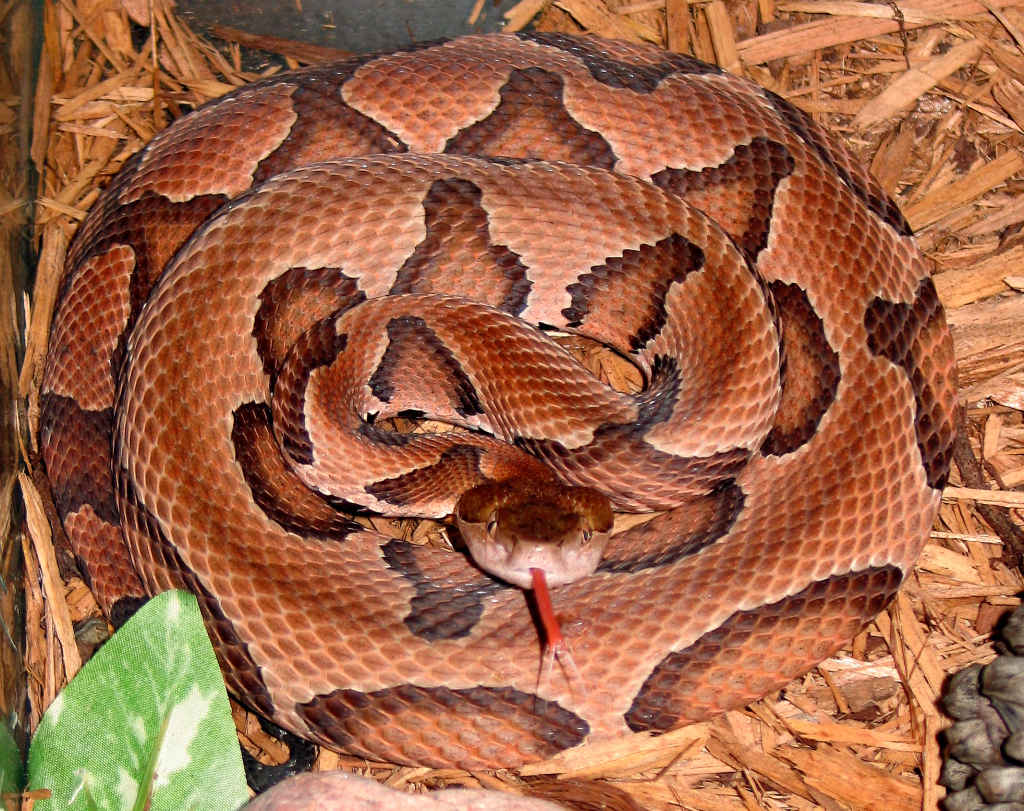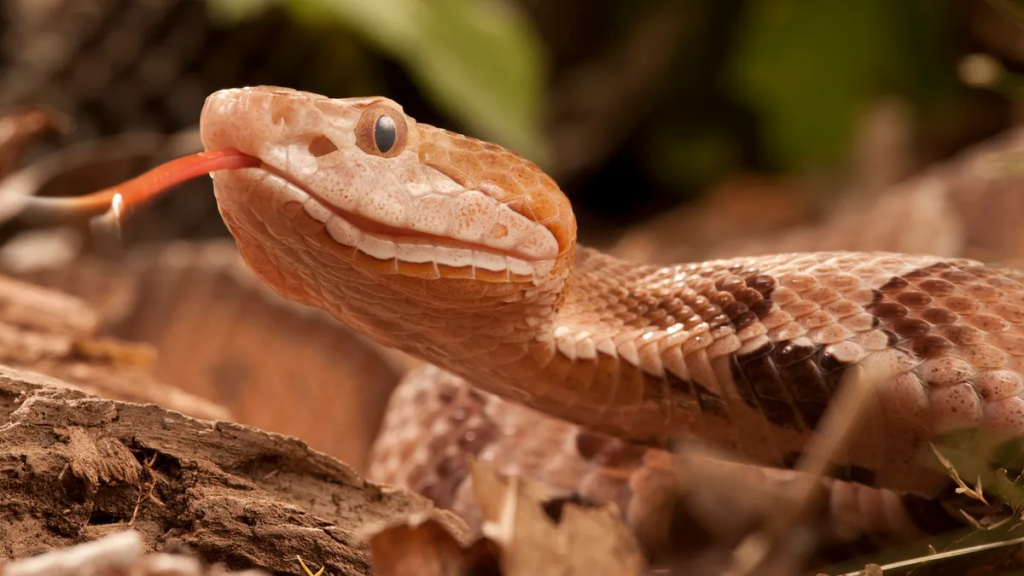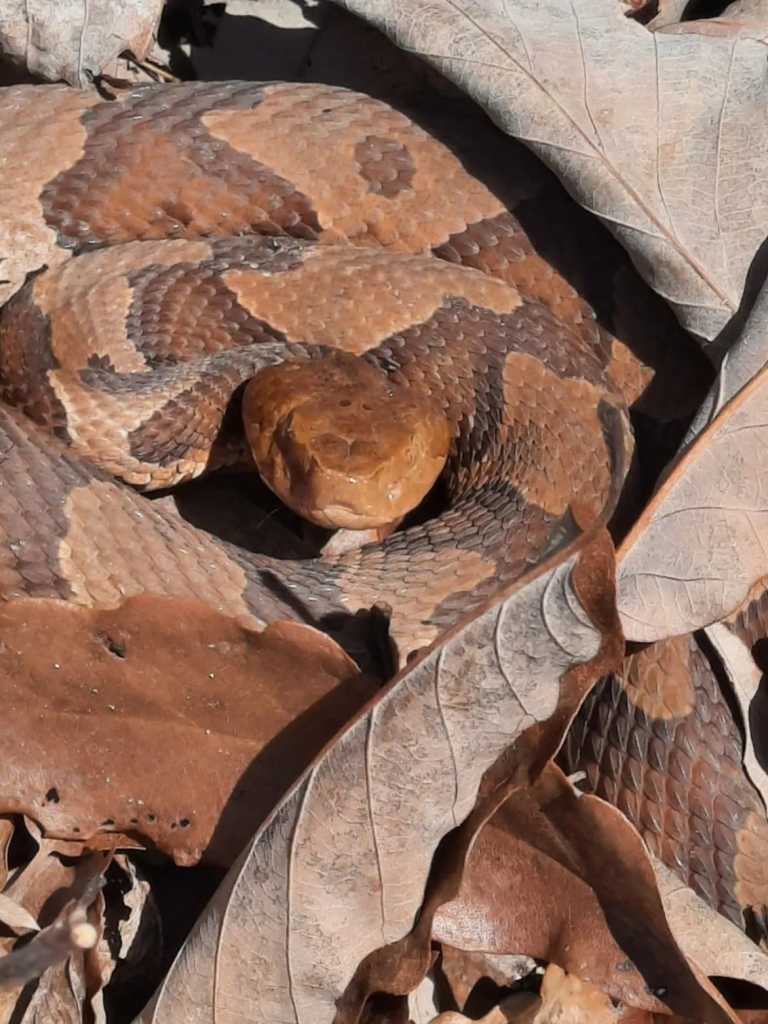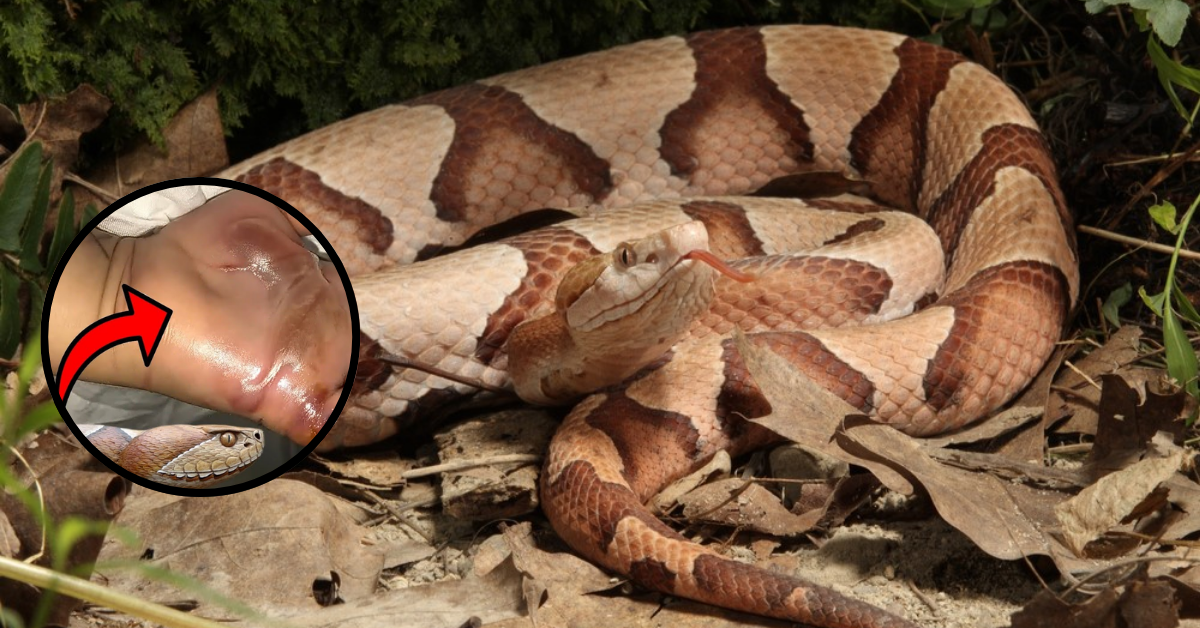In the mysterious world of snakes, the Copperhead (Agkistrodon contortrix) stands out not just for its distinctive appearance, but also for a surprising fact: its venom is being studied as a potential treatment for breast cancer! But are these snakes really as dangerous as they seem?
🔍 What Is a Copperhead Snake?
- Scientific name: Agkistrodon contortrix
- Habitat: Eastern and central United States
- Features: Copper-colored scales, hourglass-like patterns, and excellent camouflage in leaf litter and rocky areas.

⚠️ Are They Aggressive?
Although they are venomous pit vipers, copperheads are not considered aggressive.
They typically avoid humans and only strike if threatened, such as when stepped on or startled at close range.

What makes them risky is their habit of staying still and blending perfectly into their surroundings, which can lead to accidental encounters.

💉 Can Their Venom Fight Cancer?
Believe it or not, scientists have discovered a protein in copperhead venom called contortrostatin, which:
- Slows the growth of breast cancer cells
- Prevents the spread (metastasis) of cancer in the body

Though studies are still in the early stages and have only been tested on animals, this breakthrough offers promising new directions in cancer research.

📢 In Conclusion:
The copperhead is not the villain it’s often made out to be — in fact, it may one day become a silent hero in the fight against cancer.

Have you ever encountered a copperhead in the wild?
What do you think about using snake venom for medical treatment?
💬 Share your thoughts in the comments below!

